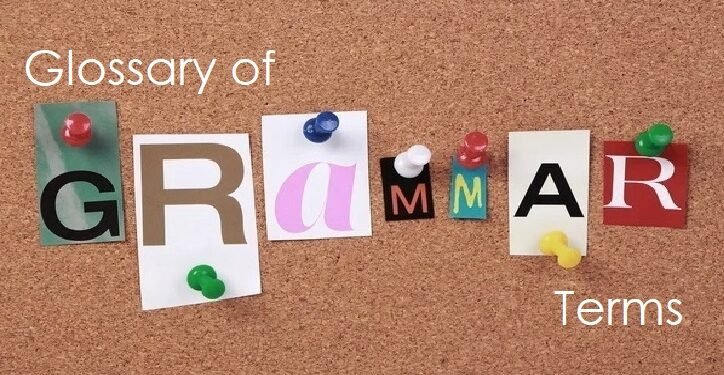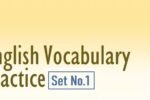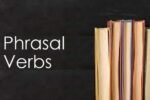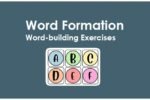Glossary of 100 Grammatical Terms

We present a comprehensive glossary featuring 100 fundamental grammatical terms. From nouns and verbs to clauses and punctuation, each term is accompanied by a clear and succinct explanation. It provides readers with the foundational knowledge needed to navigate the nuances of language with confidence. Whether you’re a student, a teacher, language enthusiast or professional communicator, this resource serves as an invaluable tool for enhancing your understanding of grammar and unlocking the full potential of your linguistic prowess.
Abstract Noun: A noun that refers to ideas, qualities, or states rather than concrete objects (e.g., “love,” “happiness”).
Adjective: A word that modifies a noun or pronoun by providing additional information about its qualities or attributes (e.g., “beautiful,” “happy”).
Adverb: A word that modifies a verb, adjective, or other adverb, typically providing information about time, place, manner, degree, or frequency (e.g., “quickly,” “very”).
Affix: A morpheme added to a word to change its meaning or function, typically a prefix or suffix.
Agreement: The correspondence between the different parts of a sentence, typically between subjects and verbs or pronouns and antecedents.
Antecedent: The noun or pronoun to which a pronoun refers in a sentence (e.g., “John” is the antecedent of “he” in “John is tall; he plays basketball”).
Antonym: A word or phrase that has the opposite meaning to another word or phrase (e.g., “hot” is an antonym of “cold”).
Appositive: A noun or noun phrase that renames or explains another noun or pronoun beside it in a sentence (e.g., “My friend Alice, a talented musician, performed last night”).
Article: A type of determiner that specifies definiteness (e.g., “a,” “an,” “the”).
Aspect: A grammatical category that indicates the nature of the action or event described by a verb, such as continuous, perfect, or progressive aspect.
Auxiliary Verb: A verb used in forming the tenses, moods, and voices of other verbs, such as “have,” “be,” and “do.”
Case: A grammatical category that reflects the role of a noun or pronoun in a sentence, such as nominative, accusative, or genitive case.
Clause: A group of words containing a subject and a predicate that can function as a complete sentence or as part of a larger sentence.
Collective Noun: A noun that represents a group of individuals, such as “team,” “family,” or “herd.”
Comparative: A form of an adjective or adverb used to compare two things, typically formed by adding “-er” or “more” before the adjective or adverb (e.g., “bigger,” “more beautiful”).
Compound: A word formed by combining two or more words or morphemes (e.g., “blackboard,” “starfish”).
Conjunction: A word or phrase used to connect words, phrases, clauses, or sentences (e.g., “and,” “but”).
Contraction: A shortened form of a word or group of words created by omitting one or more letters or sounds and replacing them with an apostrophe (e.g., “can’t” for “cannot”).
Coordination: The joining of words, phrases, or clauses of equal importance within a sentence using conjunctions like “and,” “but,” or “or.”
Dangling Modifier: A word or phrase that is improperly positioned in a sentence so that it does not clearly modify the intended word or phrase (e.g., “Running down the street, the car hit the lamp post”).
Definite Article: The article “the,” used to refer to a specific noun or nouns that are already known to the reader or listener.
Definite Pronoun: A pronoun that refers to a specific person or thing, such as “this,” “that,” “these,” or “those.”
Demonstrative Pronoun: A pronoun that points to a specific thing or things within a sentence, such as “this,” “that,” “these,” and “those.”
Determiner: A word used before a noun to indicate quantity, possession, specificity, or definiteness (e.g., “the,” “some,” “my”).
Direct Object: The noun or pronoun that directly receives the action of the verb in a sentence (e.g., “the ball” in “She threw the ball”).
Ellipsis: The omission of one or more words that are easily understood in context but are not necessary for understanding the sentence.
Finite Verb: A verb form that shows tense, person, and number and is used in a main clause to indicate the time of the action or state.
Gender: A grammatical category that classifies nouns and pronouns as masculine, feminine, or neuter.
Gerund: A verb form ending in “-ing” that functions as a noun, often used as the subject or object of a sentence (e.g., “Swimming is my favorite hobby”).
Homograph: A word that is spelled the same as another word but has a different meaning and may have a different pronunciation (e.g., “tear” meaning a drop of water from the eye and “tear” meaning to rip).
Homonym: A word that sounds the same as another word but has a different meaning or spelling (e.g., “bear” as in the animal and “bear” as in to carry).
Homophone: A word that sounds the same as another word but has a different meaning and often a different spelling (e.g., “there,” “their,” “they’re”).
Hyperbole: An exaggerated statement or claim not meant to be taken literally, used for emphasis or effect (e.g., “I’ve told you a million times”).
Imperative: A verb form used to give commands or instructions (e.g., “Clean your room!”).
Imperfect Aspect: A grammatical aspect that indicates an ongoing, habitual, or repeated action in the past.
Indefinite Article: The articles “a” and “an,” used to refer to a non-specific noun or nouns that are not yet known to the reader or listener.
Indicative Mood: The mood used to make statements or ask questions, indicating facts, beliefs, or assertions (e.g., “He is going to the store”).
Indirect Object: The noun or pronoun that indicates to or for whom the action of the verb is done in a sentence (e.g., “John” in “She gave John a book”).
Infinitive: The base form of a verb, often preceded by “to,” that can function as a noun, adjective, or adverb in a sentence (e.g., “to run,” “to eat”).
Interjection: A word or phrase used to express emotion, often inserted into a sentence as an exclamation (e.g., “Wow!,” “Ouch!”).
Interrogative Pronoun: A pronoun used to ask questions, such as “who,” “whom,” “what,” “which,” or “whose.”
Intransitive Verb: A verb that does not require a direct object to complete its meaning (e.g., “She sleeps”).
Irregular Verb: A verb that does not follow the usual rules for verb conjugation (e.g., “go,” “eat,” “write”).
Modal Auxiliary: An auxiliary verb used to indicate modality, expressing necessity, possibility, permission, or ability (e.g., “can,” “may,” “must”).
Modal Verb: An auxiliary verb used to indicate modality, expressing necessity, possibility, permission, or ability (e.g., “can,” “may,” “must”).
Mood: A grammatical category that indicates the speaker’s attitude or the likelihood of the action described by the verb (e.g., indicative, subjunctive).
Nominative: A case indicating the subject of a verb or the complement of a copulative verb.
Noun: A word that refers to a person, place, thing, idea, or concept (e.g., “dog,” “house,” “love”).
Number: A grammatical category that indicates whether a noun or pronoun is singular or plural.
Object: A noun, pronoun, or noun phrase that receives the action of the verb or is affected by it.
Onomatopoeia: A word that imitates or suggests the sound it represents (e.g., “buzz,” “boom”).
Ordinal Number: A number indicating the position or order of things in a series (e.g., “first,” “second,” “third”).
Parallelism: The use of grammatically similar elements in sentences, clauses, or phrases for emphasis, clarity, or rhythm.
Participle: A verb form that can function as an adjective, typically ending in “-ing” (present participle) or “-ed” (past participle).
Passive Voice: A grammatical construction in which the subject of a sentence is the recipient of the action rather than the doer, often formed with a form of “to be” followed by the past participle of the verb (e.g., “The cake was baked by Mary”).
Past Participle: The form of a verb typically used in forming perfect or passive verb tenses, often ending in “-ed” (regular verbs) or irregularly (e.g., “eaten,” “written”).
Past Tense: A verb form used to indicate that an action or state occurred in the past.
Perfect Aspect: A grammatical aspect that indicates the completion of an action or state relative to a specific time, often formed with “have” plus the past participle of the verb (e.g., “has eaten,” “have written”).
Person: A grammatical category that indicates the relationship between the speaker and the subject of a sentence, typically first person (speaker), second person (listener), or third person (someone or something other than the speaker or listener).
Phrase: A group of words that functions as a single unit within a sentence but does not contain both a subject and a verb.
Plural: A grammatical number indicating more than one person, thing, or idea.
Possessive: A grammatical construction used to indicate ownership or possession, typically formed with an apostrophe and “s” (e.g., “John’s car,” “the dog’s tail”).
Predicate: The part of a sentence or clause that contains the verb and provides information about the subject.
Predicative Adjective: An adjective that appears in the predicate of a sentence and describes the subject (e.g., “The flowers smell sweet”).
Prefix: A morpheme added to the beginning of a word to change its meaning or create a new word (e.g., “un-” in “undo,” “pre-” in “preview”).
Preposition: A word that shows the relationship between a noun (or pronoun) and other elements in the sentence, indicating location, direction, time, or manner.
Prepositional Phrase: A phrase that begins with a preposition and usually ends with a noun or pronoun, indicating location, direction, time, or manner (e.g., “in the house,” “under the table”).
Present Participle: The form of a verb typically ending in “-ing,” used in continuous tenses or as an adjective (e.g., “running,” “swimming”).
Present Tense: A verb form used to indicate that an action or state is occurring in the present.
Pronoun: A word that can function as a substitute for a noun or noun phrase.
Proper Adjective: An adjective that is derived from a proper noun and typically capitalized (e.g., “American,” “Shakespearean”).
Proper Noun: A specific name used to identify a particular person, place, or thing, typically capitalized (e.g., “John,” “Paris,” “Microsoft”).
Punctuation: Marks used in writing to separate sentences and their elements, clarify meaning, and indicate intonation.
Qualifier: A word or phrase used to limit or modify the meaning of another word, typically an adjective or adverb (e.g., “very,” “quite”).
Quantifier: A word or phrase used to express quantity or amount, such as “some,” “many,” “few,” or “several.”
Question Tag: A short phrase added to the end of a sentence to turn it into a question or to confirm information (e.g., “You like coffee, don’t you?”).
Reflexive Pronoun: A pronoun that refers back to the subject of the sentence and indicates that the subject performs the action on itself (e.g., “myself,” “yourself,” “himself”).
Relative Clause: A type of subordinate clause that provides additional information about a noun or pronoun in the main clause (e.g., “The book that I read last night was very interesting”).
Relative Pronoun: A pronoun that introduces a relative clause and relates it to the word it modifies (e.g., “who,” “which,” “that”).
Root Word: The basic form of a word from which other words are derived through the addition of prefixes or suffixes.
Run-on Sentence: A sentence that contains two or more independent clauses without proper punctuation or conjunctions to separate them.
Sentence: A group of words that expresses a complete thought and typically contains a subject, predicate, and often an object.
Simile: A figure of speech that compares two things using “like” or “as” to indicate similarity (e.g., “She runs as fast as a cheetah”).
Singular: A grammatical number indicating one person, thing, or idea.
Split Infinitive: An infinitive verb form that has a word or words placed between “to” and the base form of the verb, such as “to boldly go.”
Subject: The noun, pronoun, or noun phrase that performs the action of the verb or about which something is stated.
Subjunctive Mood: A mood used to express wishes, suggestions, or hypothetical situations (e.g., “If I were rich, I would travel the world”).
Subordinate Clause: A clause that cannot stand alone as a complete sentence and depends on a main clause for its meaning.
Suffix: A morpheme added to the end of a word to change its meaning or create a new word (e.g., “-ly” in “quickly,” “-er” in “bigger”).
Superlative: A form of an adjective or adverb used to compare three or more things, typically formed by adding “-est” or “most” before the adjective or adverb (e.g., “biggest,” “most beautiful”).
Syllable: A unit of pronunciation containing a vowel sound, typically with one or more consonants.
Synonym: A word or phrase that has a similar meaning to another word or phrase (e.g., “happy” is a synonym of “joyful”).
Tense: A grammatical category that indicates the time at which an action or state described by a verb occurs (e.g., past, present, future).
Transitive Verb: A verb that requires a direct object to complete its meaning (e.g., “She ate lunch”).
Verb: A word that expresses an action, occurrence, or state of being.
Voice: A grammatical category that indicates the relationship between the subject and the action described by the verb (e.g., active, passive).
Vowel: A speech sound produced with an open vocal tract, typically forming the nucleus of a syllable.
Wh- Word: A word used to ask questions, typically beginning with “wh-” (e.g., “who,” “what,” “when,” “where,” “why,” “which,” “how”).
Word Order: The arrangement of words in a sentence, which affects meaning and emphasis.
Zeugma: A figure of speech in which a single word or phrase governs or modifies two or more other words or phrases in a sentence (e.g., “She broke his car and his heart”).
Our Categories:
| STATES BOARDS | CBSE BOARD |
| SPOKEN ENGLISH | GRAMMAR |
| GK | QUIZ |







